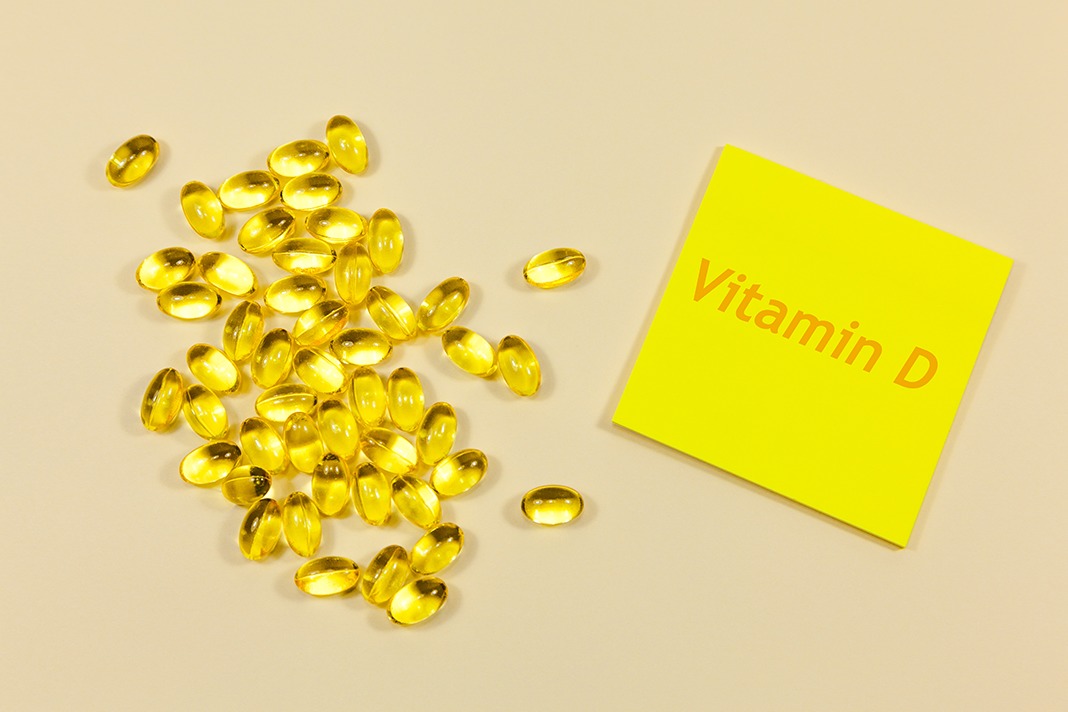 Based on the materials of the magazine “Pharmacist”
Based on the materials of the magazine “Pharmacist”The first thing that comes to our mind when we talk about vitamin D is its role in calcium exchange and bones formation. But scientists think that its useful properties are not limited to this. It was found that vitamin D performs a number of other important functions in the organism, for example, takes part in regulation of immune reactions and permeability of the epithelium of the mucous membranes. Nowadays the researches are held about the link between vitamin D deficiency and a decrease in immunity, the development of respiratory infections, metabolic and proliferative diseases. This is a very hot topic since during the last decade vitamin D deficiency is registered in half of the world's population. Why does it happen?
Why is there a lack of vitamin D?
Rare sun exposure due to changes in modern lifestyle or living in a certain area affects health. The fact is that the active form of vitamin D is formed in our skin under the sunlight influence but today more and more people spend time indoors. Besides UV rays of the spectrum “B” help to form sufficient vitamin D level which can be seen only at certain times of the day. U will agree that not every working man can afford a walking in sunny weather in the morning or afternoon.
You can get some vitamin D (20%) within food products. Cod liver, mackerel, Atlantic herring, salmon, milk, eggs, butter, beef liver are rich in vitamin D. But modern refined food generally lacks vitamins. Besides many people seldom eat listed products. Those who adhere to vegetarianism also belong to the risk group of vitamin D deficiency.
What does vitamin D "look like"?
Vitamin D was secreted first as a biologically active substance at the beginning of the 20th century. A. Gess and M. Weinshtok got an ergosterol from vegetable oils which was called “vitamin D1”. Under the influence of UV-rays on it a rickets cure compound was formed – an ergocalciferol or vitamin D2. In 1936 A. Windawsom secreted cholecalciferol from fish oil. It was called vitamin D3. It is vitamin D3 which is very important for the human organism. In vivo it is formed in the skin under the influence of the ultraviolet radiation and turns into a biologically active form. The comprehensive study of formation and mechanism of vitamin D3 action allowed scientists to conclude that vitamin D is a natural regulator of many vital functions.
Possibilities of the "sunshine vitamin"
Vitamin D receptors are found in various human organs and tissues. Connecting with specific VDR receptors, vitamin D acts directly on cellular DNA and induces a whole cascade of biological effects. It affects the production of hormones, growth and inflammation factors, numerous proteins and of course blood calcium levels. In addition, vitamin D is involved in the regulation of cell formation in all organs and tissues, including immunocompetent cells. It has a positive effect on the work of nonspecific defense mechanisms and adaptive immunity. In 2010 scientists systematized the results of numerous studies indicating the antibacterial and antiviral effects of vitamin D. In particular, it was found that at least 155 proteins, whose gene expression is regulated by VDR receptors, are involved in supporting antiviral immunity. It was also noted that the vitamin D subsidy helps to reduce the risk of ARVI incidence by an average of 12%.
Vitamin D deficiency increases the risk of a host of other life-shortening diseases. Insufficient intake of vitamin D causes changes in insulin secretion and glucose tolerance, which creates the basis for the onset of diabetes mellitus. Disruption of the renin-angiotensin system, associated with a lack of vitamin D and a violation of the concentration of calcium ions, provokes an increased risk of cardiovascular diseases and myocardial infarction. Recently, new data have appeared on the relationship between the likelihood of developing proliferative diseases and a decrease in the content of vitamin D in the blood.
The importance of vitamin D for women
Adequate supply of vitamin D is very important for women during menopause, as at this time the level of sex hormones decreases, which in itself leads to bone loss. Hypovitaminosis D accelerates this process and contributes to the development of osteoporosis. The need for this vitamin in pregnant women is especially great, because it is necessary for the proper development of the lungs and the immune system of a child. Unfortunately, in practice, vitamin D is mainly prescribed to children during the first months of life. Later, they forget about it, or appoint it sporadically.
Convenient vitamin D capsules
For the convenience of selecting a dose of vitamin D3 (cholecalciferol), it is recommended to use drugs with different dosages of "sunshine vitamin" - D3-caps ultra 500 IU, D3-caps 2000 IU, D3-caps 5000 IU, D3-caps maxima 50 000 IU.

When, whom and what dosage to recommend?
D3-caps ultra 500 IU
• For the prevention and treatment of vitamin D deficiency in children from 6 years old, adolescents and adults
• For the prevention and treatment of vitamin D deficiency in pregnant and lactating women
D3-caps 2000 IU
• For the treatment of vitamin D deficiency in adults and adolescents from 12 years old
• For the prevention of low-trauma fractures in people over 60 years old and as an adjunct to osteoporosis therapy in combination with calcium in patients at risk of vitamin D deficiency
D3-caps 5000 IU
• For the treatment of vitamin D deficiency in adults and adolescents from 12 years of age
D3-caps maxima 50 000 IU
• For the treatment of vitamin D deficiency in adults
The therapeutic dose of vitamin D is selected individually, taking into account the severity of its deficiency, confirmed by laboratory. It is important to monitor calcium and phosphate metabolism during treatment.
For the treatment of established D hypovitaminosis in adults and adolescents from 12 years old from risk groups (people with limited exposure to the sun, patients with obesity, osteoporosis, diseases of the intestine and hepatobiliary system), vitamin D3-caps is used at a dosage of 5000 IU. In such patients, it is necessary to monitor the concentration of calcium in the blood and urine, as well as the concentration of 25-hydroxycholecalciferol in the blood serum.
During pregnancy, vitamin D3 in a dosage of over 500 IU is recommended only in cases of obvious need under laboratory supervision. When prescribing cholecalciferol to a child, a prophylactic dose of vitamin D is taken into account, which is recommended for a nursing woman.
There are medical contraindications and adverse reactions. READ THE INSTRUCTIONS BEFORE USING MEDICINAL PREPARATIONS